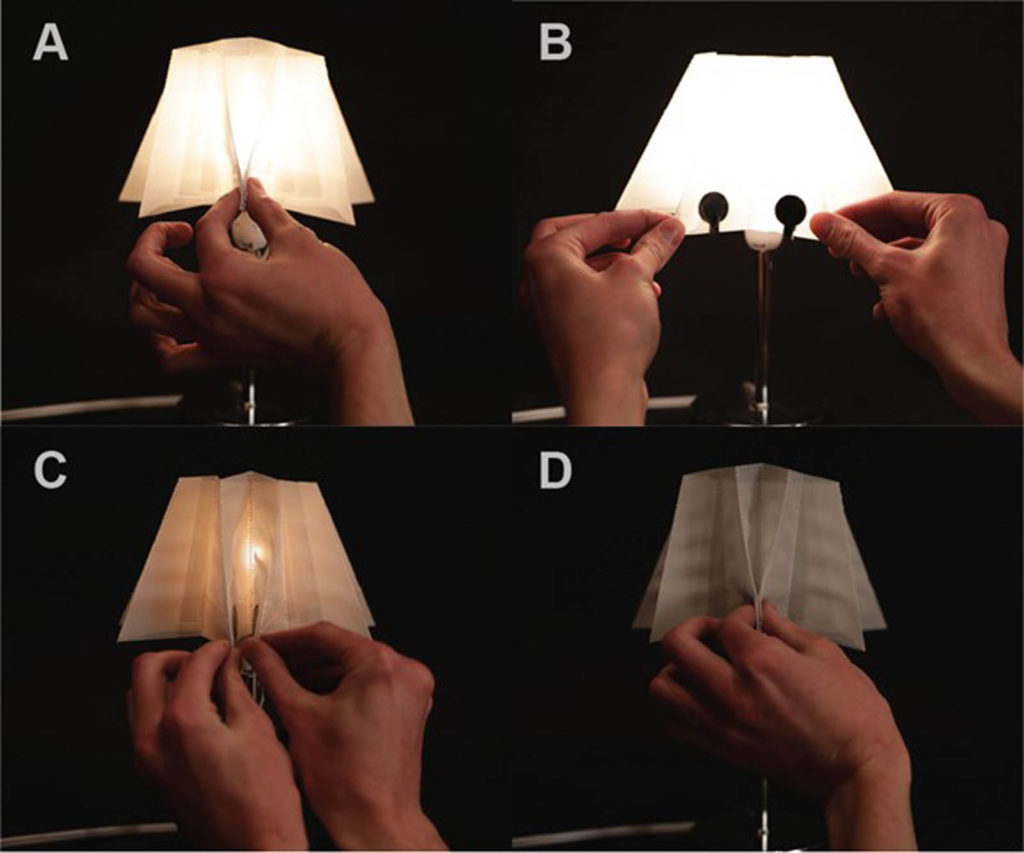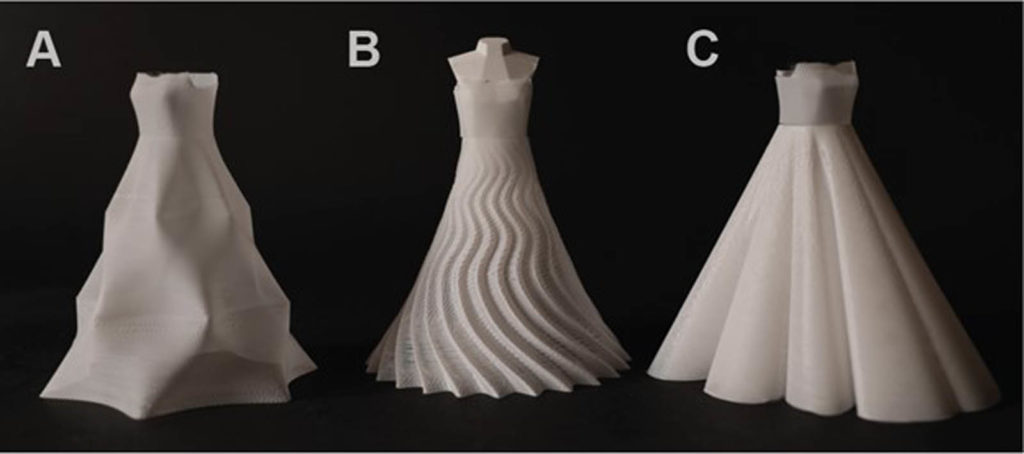3D fabric structures have been around for thousands of years, but the process of turning fiber into fabric hasn’t changed very much. A research team based at MIT and headed by Jack Forman recognized a need for a fast and accessible approach to manufacturing textiles into 3D forms.

A report provided by MIT says their research has resulted in DefeXtiles, which are thin, flexible textiles of many materials that can quickly be printed into a variety of 3D forms using an inexpensive, unmodified, 3D printer with no additional software.
This is achieved by using the material properties to encode the textile form: specifically using the periodic gaps that emerge when not enough material is being used to print. The printer moves and prints the same as it would a solid, rigid sheet, but by leveraging the stringing behavior that occurs in thermoplastic filament, it is possible to encode small gaps that afford the stretchability and flexibility. Forman says that, in a sense, the machine and the material are co-fabricating the form.

The researchers illustrated the process by creating dress designs that can be altered as the end user prefers. Besides clothing, uses for the fabric technology are extremely varied, from the manufacture of an ultra-tough shuttlecock using TPU, to a pleated lampshade incorporated with capacitive sensing.
The researchers say that a particularly exciting future direction is leveraging DefeXtiles to produce low-cost and effective customized surgical meshes that better reinforce organs and tissue after surgery. Additionally, if loaded with antibiotics, such as ciprofloxacin HCl, the degradation would slowly release the antibiotic preventing infection. Another feature is that the mechanical properties of the mesh could be tuned to match that of the tissue being supported.
 TEXTILES.ORG
TEXTILES.ORG


